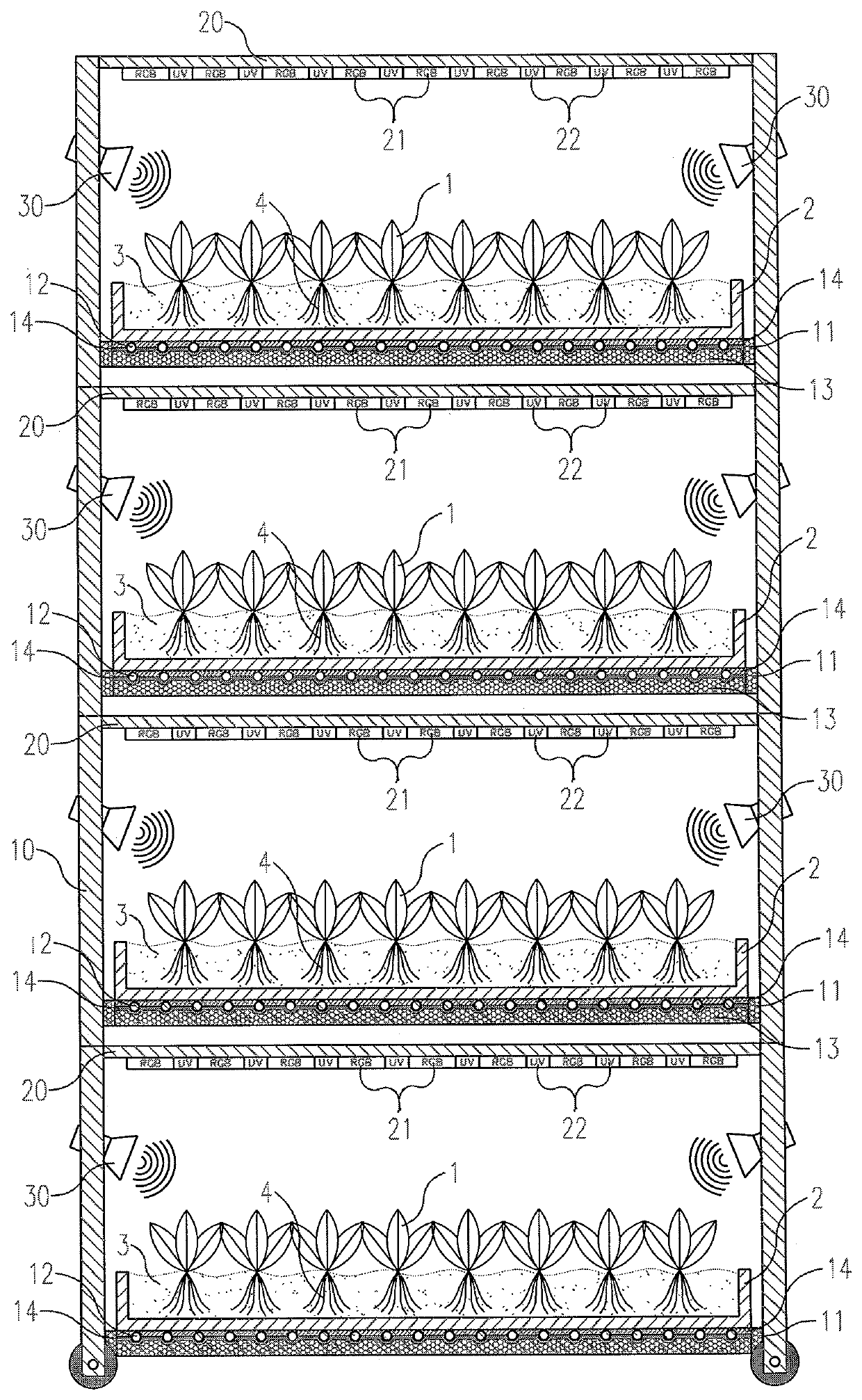System and method for growing a plant in an at least partly conditioned environment
a technology of system, applied in the field of system for growing a plant in at least partly conditioned environment, can solve the problems of occupying a relatively large amount of expensive land area in these areas, consuming energy to keep a greenhouse warm, and affecting the efficiency of the plant, so as to achieve the effect of improving efficiency
- Summary
- Abstract
- Description
- Claims
- Application Information
AI Technical Summary
Benefits of technology
Problems solved by technology
Method used
Image
Examples
Embodiment Construction
[0018]The system shown in FIG. 1 makes use of a multi-layer cultivation of plant 1 so as to enable the best possible use of an available surface area. The plant is accommodated here in culture trays 2 with a suitable culture substrate 3 therein, such as earth, glass wool, rockwool or simply water, for the purpose of receiving a root system 4 of the plant therein. Culture trays 2 are placed one above the other on beams 11 of a frame 10 constructed almost entirely from stainless steel. Any desired number of such carriages 10 can thus be combined to form a complete cultivation system in a conditioned environment, wherein the plant is brought to full development in fully controlled manner. Irrigation and fertilizing provisions (not further shown) are arranged at or in carriages 10 in order to provide the plant with sufficient water and the necessary nutrients.
[0019]Beams 11 of the carriages each comprise a closed conduit system 12 of a hose or tube which meanders at a regular pitch. In ...
PUM
 Login to View More
Login to View More Abstract
Description
Claims
Application Information
 Login to View More
Login to View More - R&D
- Intellectual Property
- Life Sciences
- Materials
- Tech Scout
- Unparalleled Data Quality
- Higher Quality Content
- 60% Fewer Hallucinations
Browse by: Latest US Patents, China's latest patents, Technical Efficacy Thesaurus, Application Domain, Technology Topic, Popular Technical Reports.
© 2025 PatSnap. All rights reserved.Legal|Privacy policy|Modern Slavery Act Transparency Statement|Sitemap|About US| Contact US: help@patsnap.com

